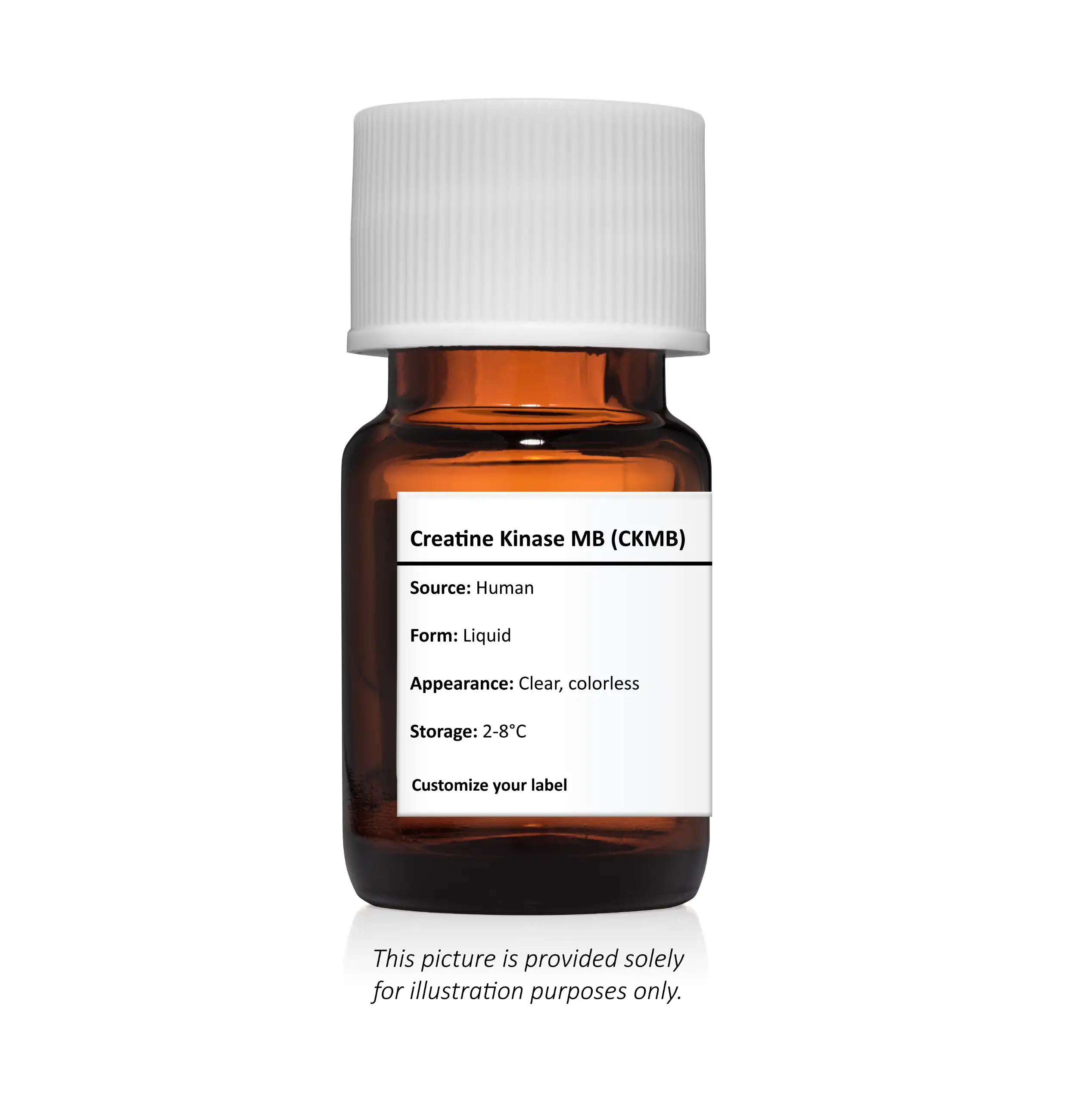Creatine Kinase MB (CKMB)
Creatine Kinase MB (CKMB) is a dimeric enzyme and an important mycocardial marker primarily found in the muscle tissue of the heart.
| Product Specifications | |
|---|---|
| Source | Human |
| Form | Liquid |
| Buffer | TRIS buffer with 0.1% Sodium Azide at pH 7.0 |
| Concentration | ≥550 IU/mL |
| Purity | Immunopure is ≥95% by SDS Page |
| Assay | Assay performed on Roche Cobas e411 (Mass) & C501 (Unit) |
| Storage | 2-8°C |
| Molecular Weight | 81,000 - 84,000 kDa |
| Apperance | Clear, Colorless |
| Associated Products: | Creatine Kinase BB (CKB)): Partially Purified, Purified, and Immunopure Creatine KInase MM (CKMM): Partially Purified, Purified, and Immunopure Myoglobin: Purified and Immunopure |

It is clinically used to confirm acute myocardial infarction (AMI) or any other diagnosis of myocardial injury in patients. CKMB levels increase when a patient has had any myocardial damage. According to the Mayo Clinic, CKMB levels can be detected within 3-8 hours of the onset of chest pain and peaks within 12-24 hours. An acceptable CKMB value for a male is ≤737ng/mL The acceptable value for a female is ≤413 ng/mL. CKMB is tested alongside Troponin T and sometimes with a Myoglobin for an overall view of cardiac status.
